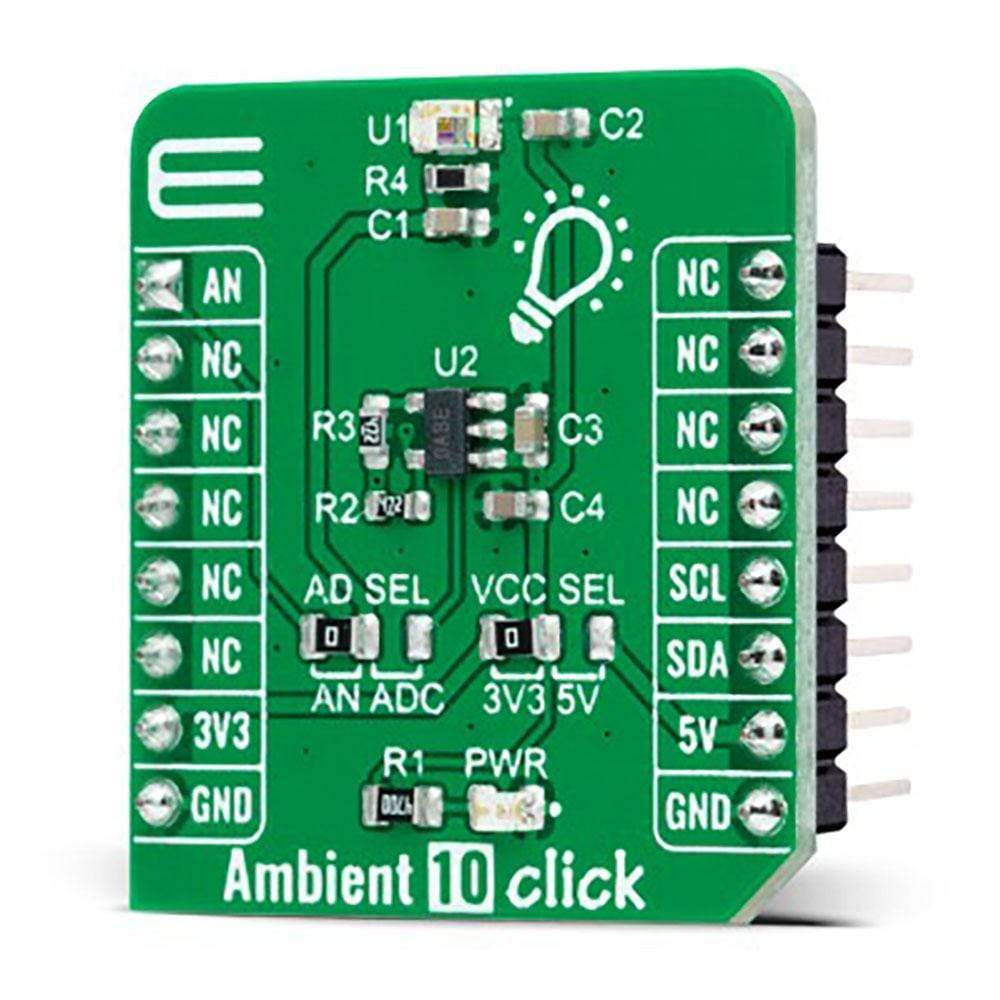
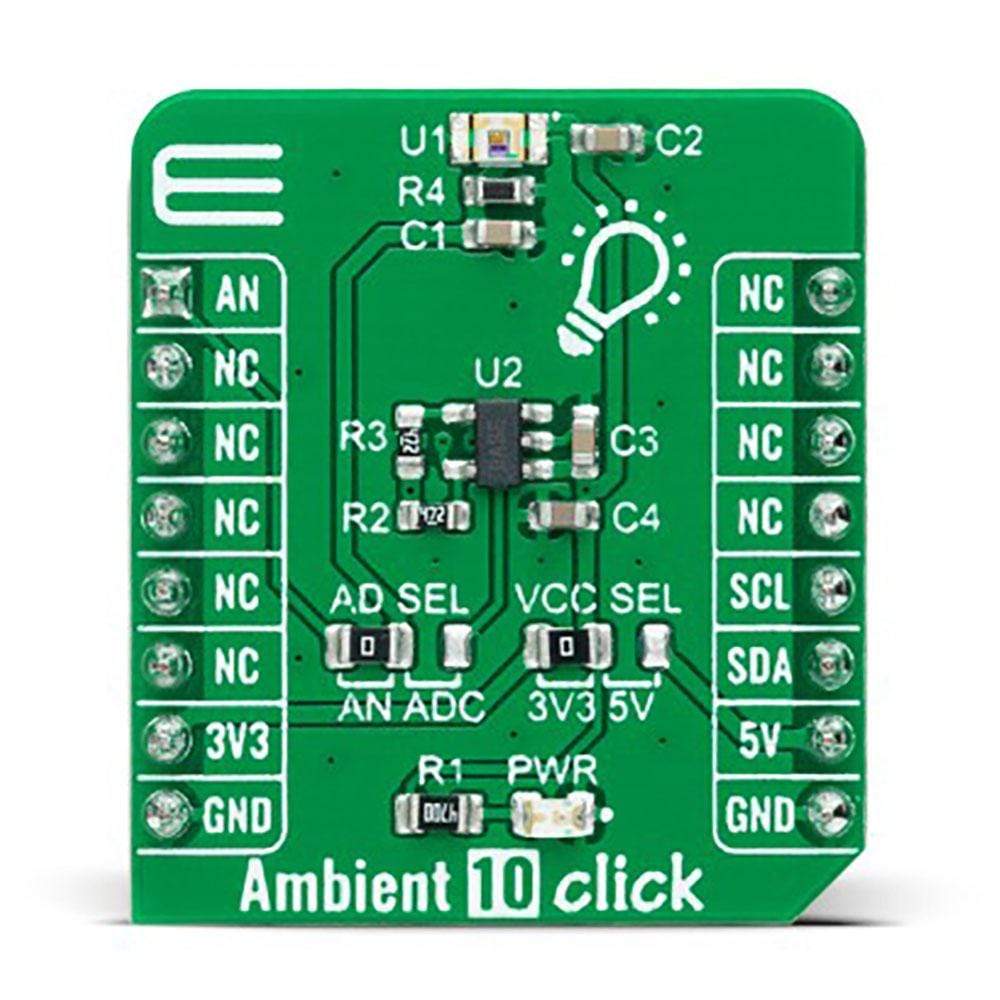
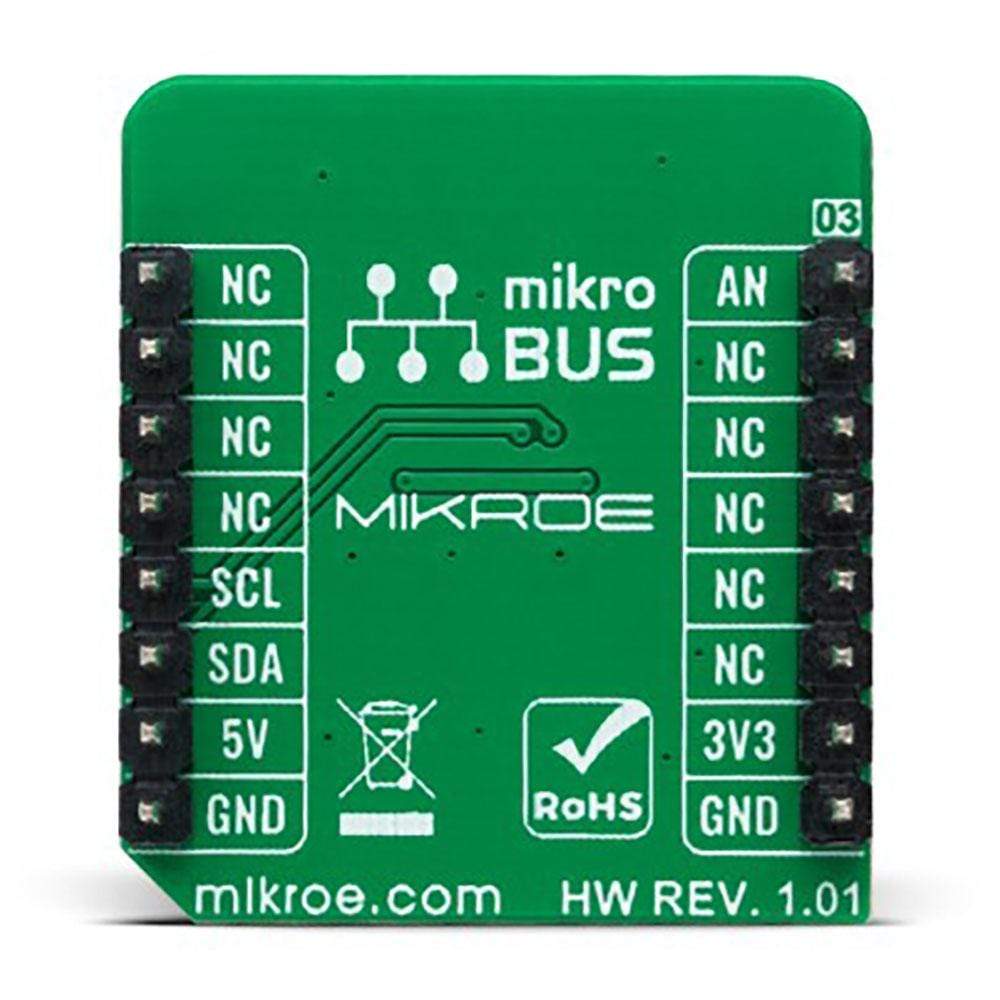
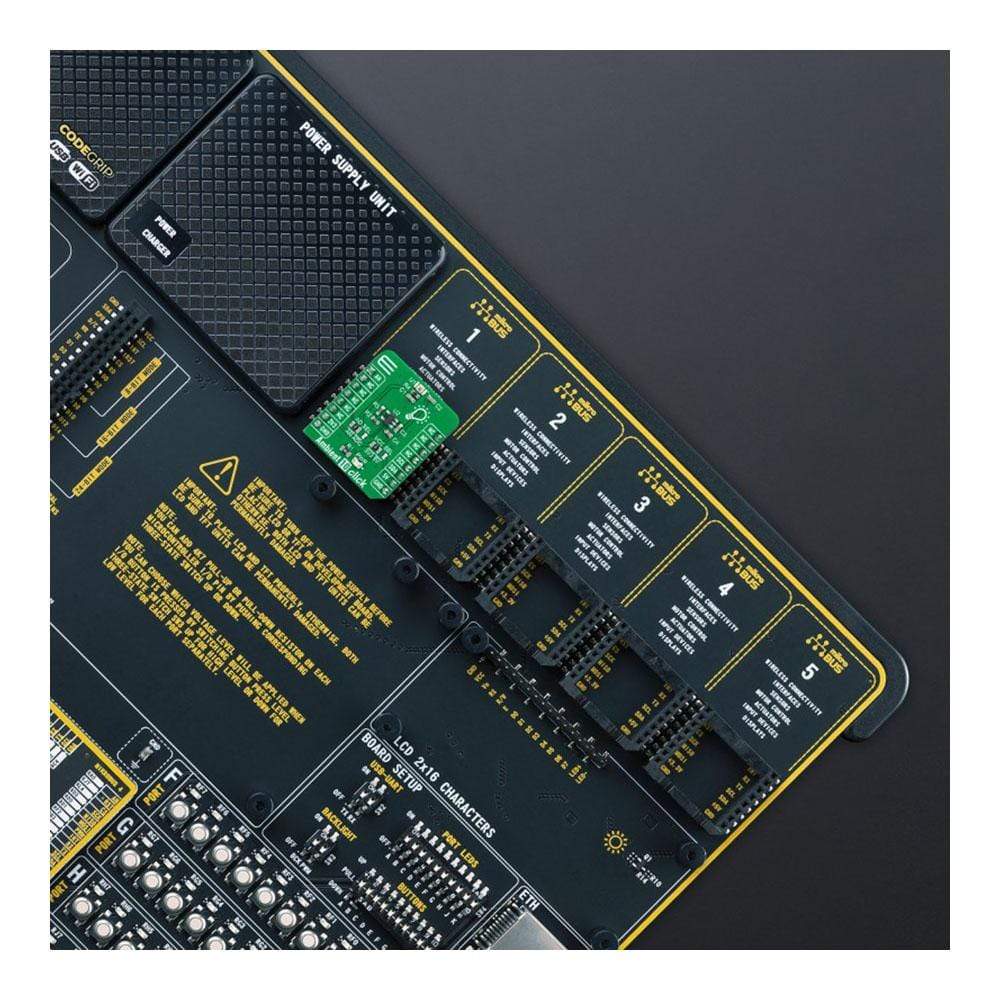
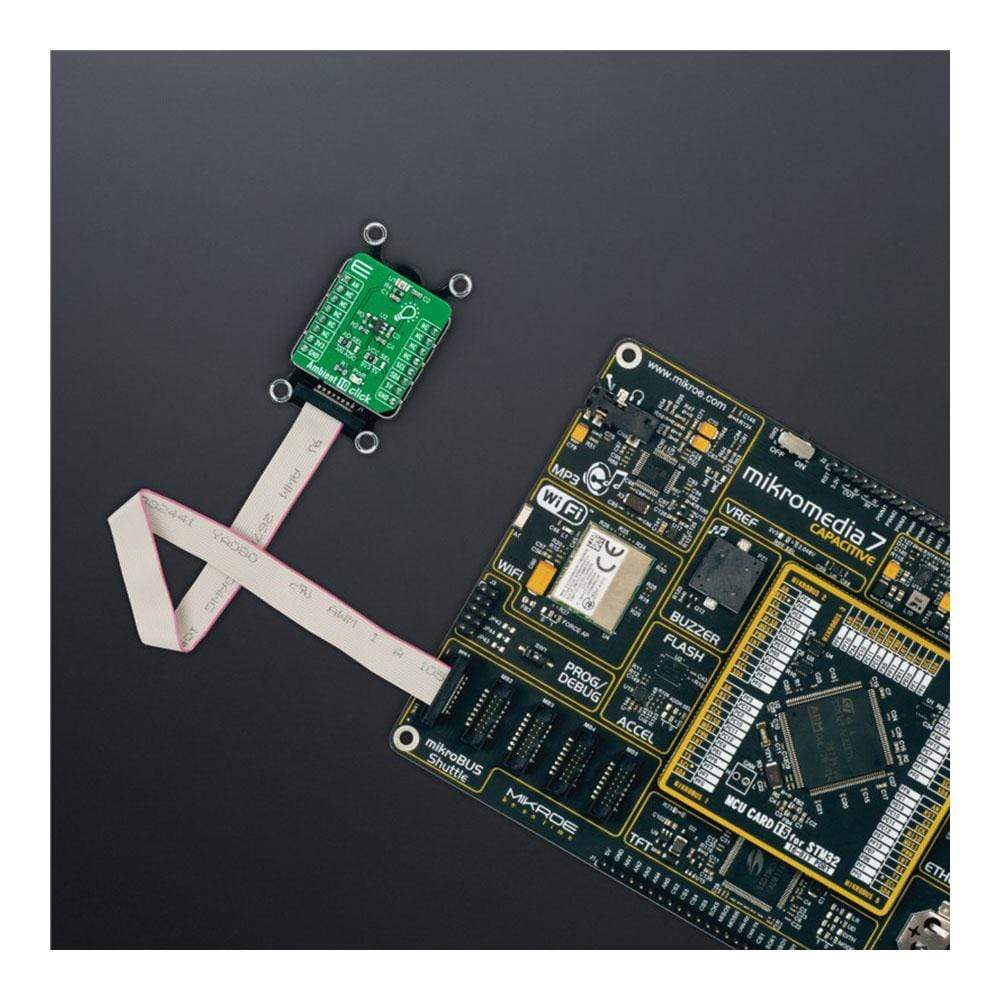
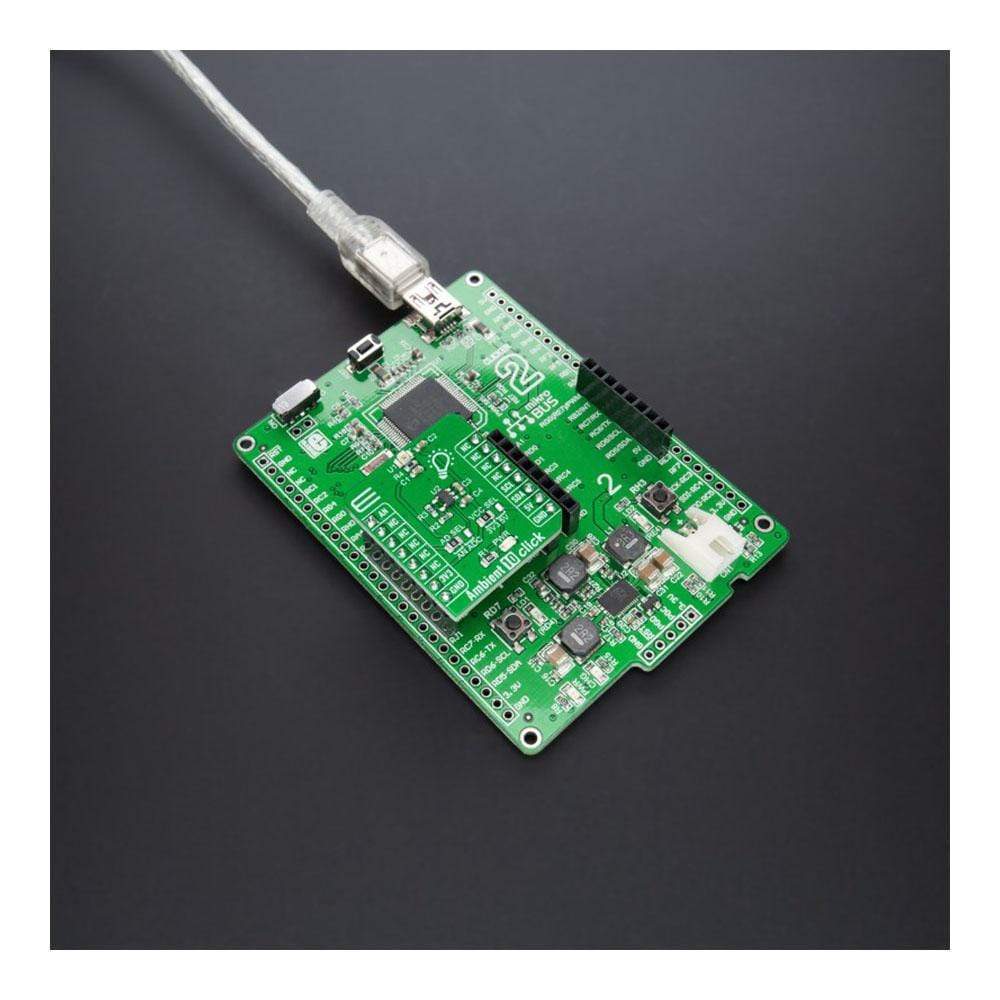
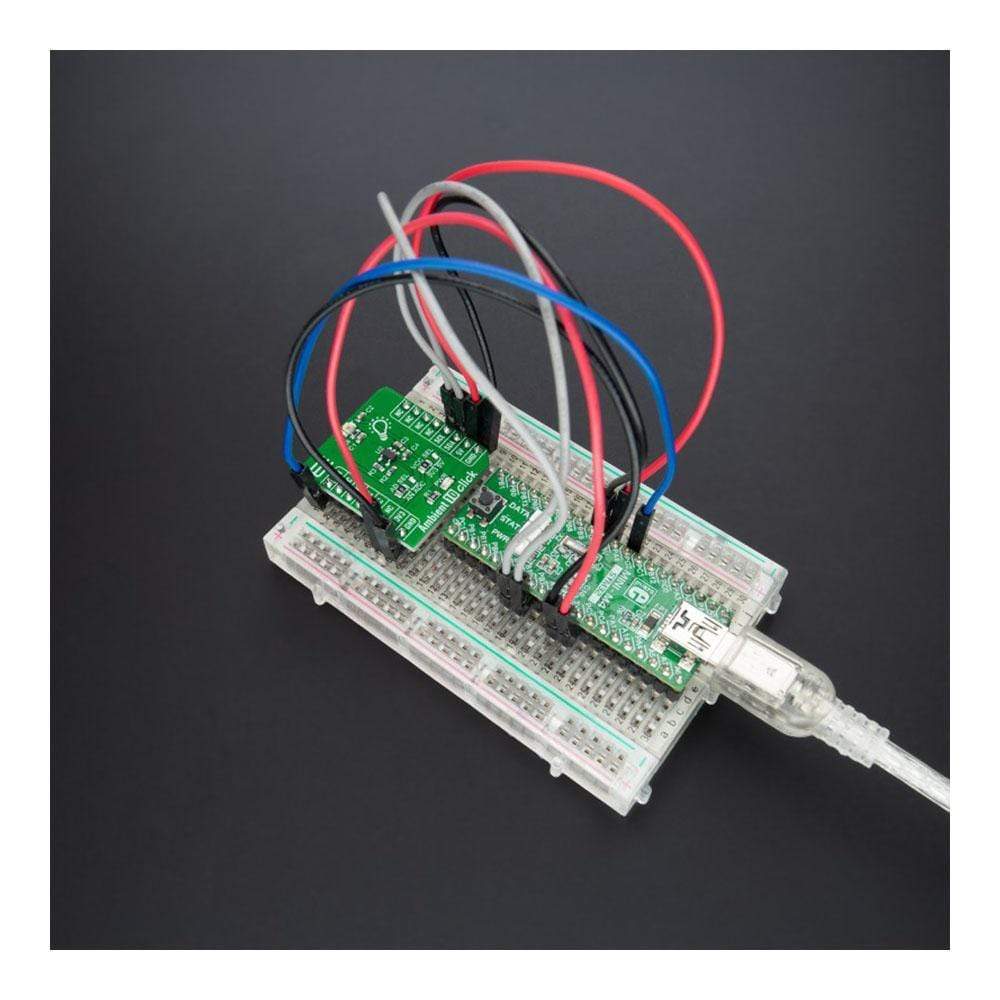
Overview
The Ambient 10 Click Board™ is a compact add-on board used to sense the amount of the present ambient light. This board features the APDS-9006-020, an analogue-output ambient light photosensor from Broadcom Limited. It consists of a spectrally suited photosensor, which provides excellent responsivity that is close to the response of the human eyes. Besides, it is also characterized by good output linearity across a wide illumination range, low sensitivity variation across various light sources, and comes with the ability to process the output signal in analogue or digital form. This Click Board™ is the most suitable for obtaining ambient light data for adjusting brightness in applications that require power saving and better visibility.
The Ambient 10 Click Board™ is supported by a mikroSDK compliant library, which includes functions that simplify software development. This Click Board™ comes as a fully tested product, ready to be used on a system equipped with the mikroBUS™ socket.
Downloads
Der Ambient 10 Click Board™ ist eine kompakte Zusatzplatine, die zur Messung der Menge des vorhandenen Umgebungslichts verwendet wird. Diese Platine verfügt über den APDS-9006-020, einen Umgebungslicht-Fotosensor mit analogem Ausgang von Broadcom Limited. Er besteht aus einem spektral geeigneten Fotosensor, der eine ausgezeichnete Reaktionsfähigkeit bietet, die der Reaktion des menschlichen Auges nahe kommt. Darüber hinaus zeichnet er sich durch eine gute Ausgangslinearität über einen weiten Beleuchtungsbereich, geringe Empfindlichkeitsschwankungen über verschiedene Lichtquellen hinweg aus und bietet die Möglichkeit, das Ausgangssignal in analoger oder digitaler Form zu verarbeiten. Dieses Click Board™ eignet sich am besten zum Erfassen von Umgebungslichtdaten zur Anpassung der Helligkeit in Anwendungen, die Energieeinsparung und bessere Sichtbarkeit erfordern.
Das Ambient 10 Click Board™ wird von einer mikroSDK-kompatiblen Bibliothek unterstützt, die Funktionen enthält, die die Softwareentwicklung vereinfachen. Dieses Click Board™ wird als vollständig getestetes Produkt geliefert und ist bereit für den Einsatz auf einem System, das mit der mikroBUS™-Buchse ausgestattet ist.
| General Information | |
|---|---|
Part Number (SKU) |
MIKROE-4777
|
Manufacturer |
|
| Physical and Mechanical | |
Weight |
0.02 kg
|
| Other | |
Country of Origin |
|
HS Code Customs Tariff code
|
|
EAN |
8606027383588
|
Warranty |
|
Frequently Asked Questions
Have a Question?
Be the first to ask a question about this.







